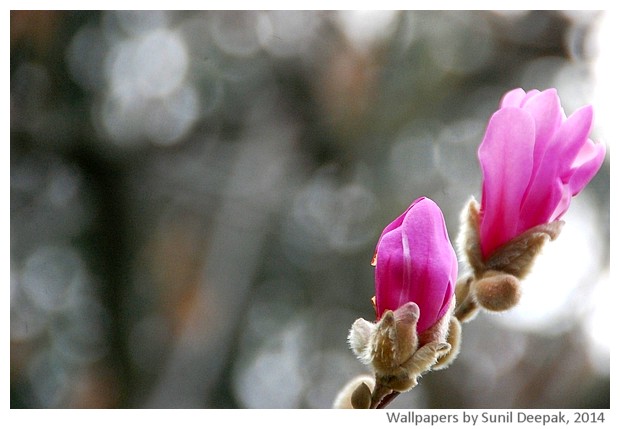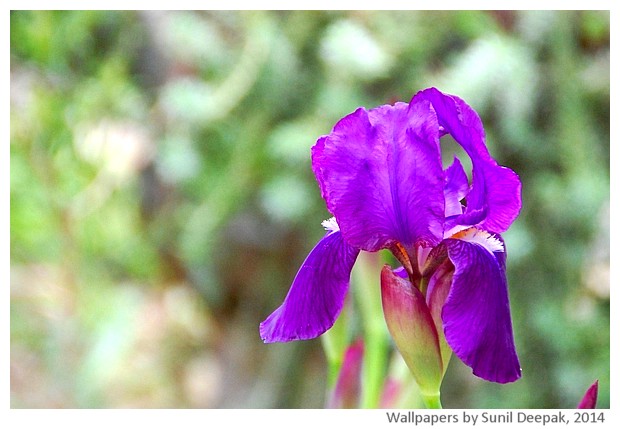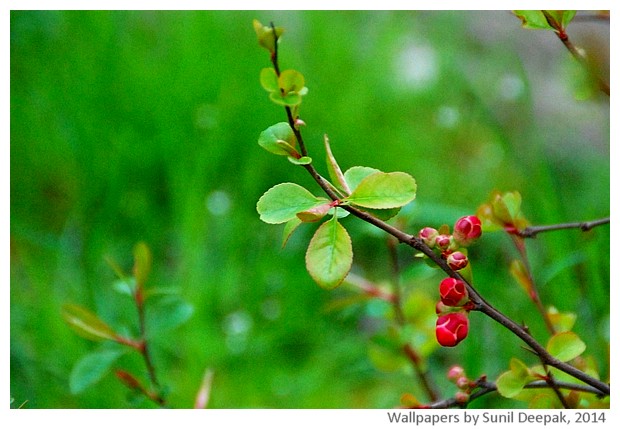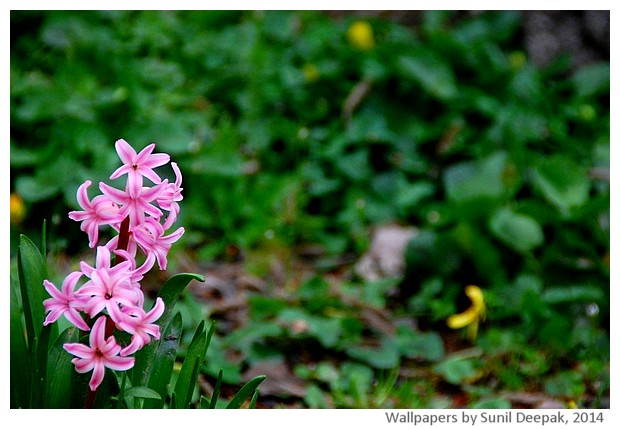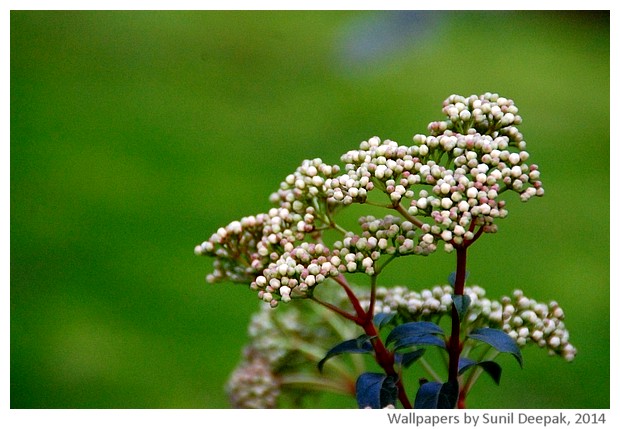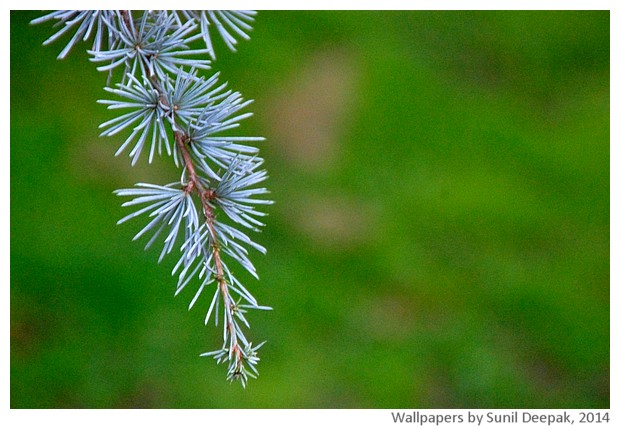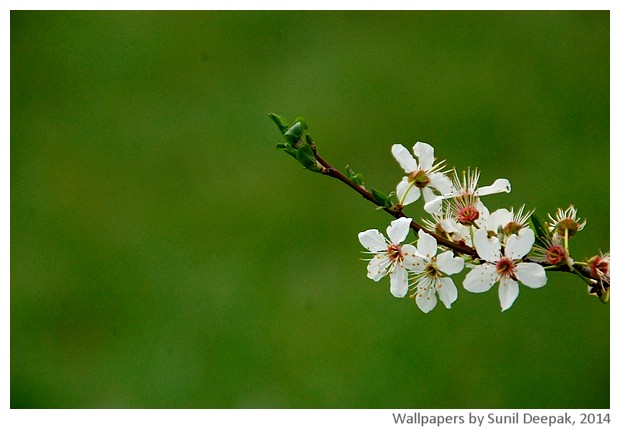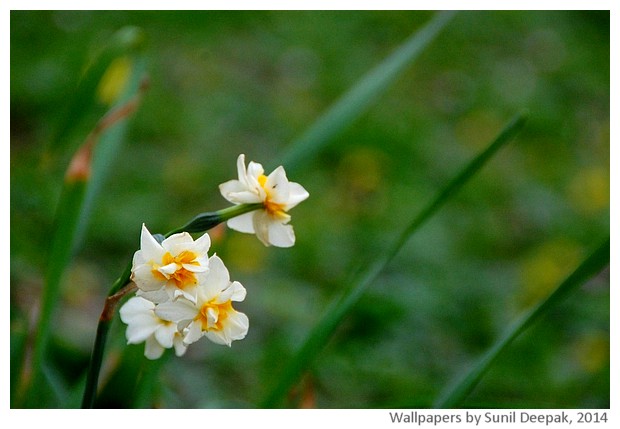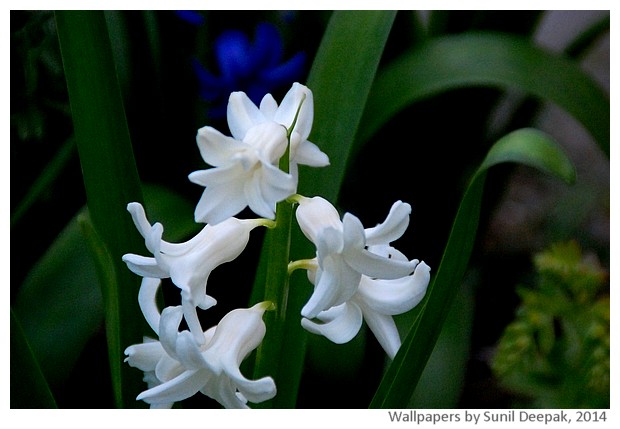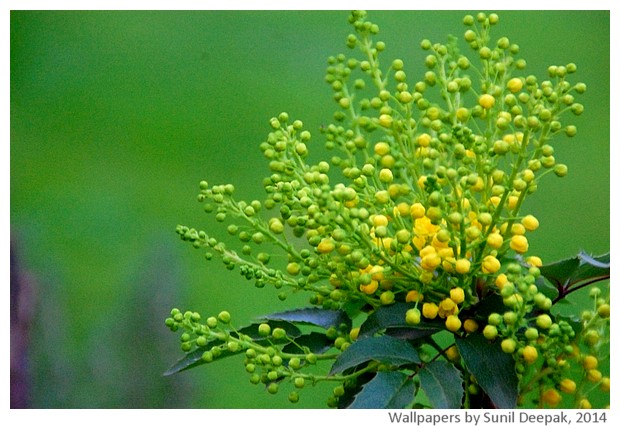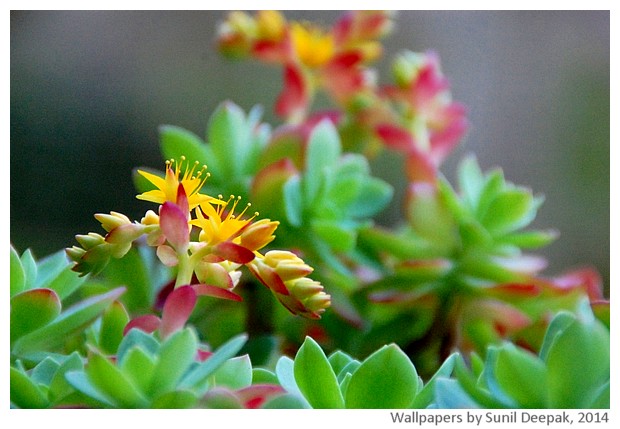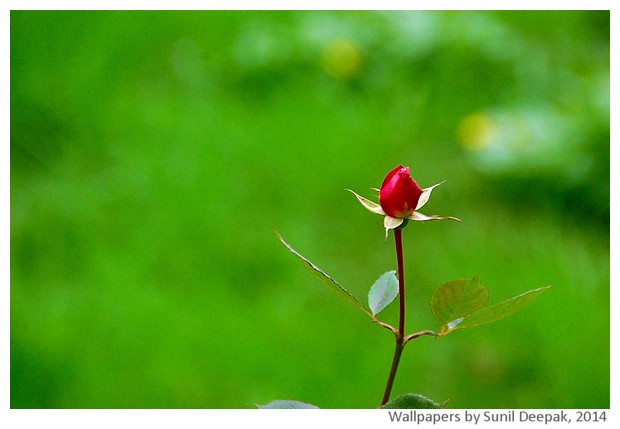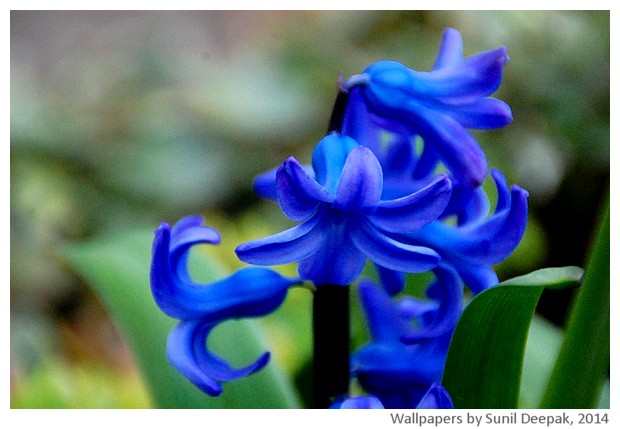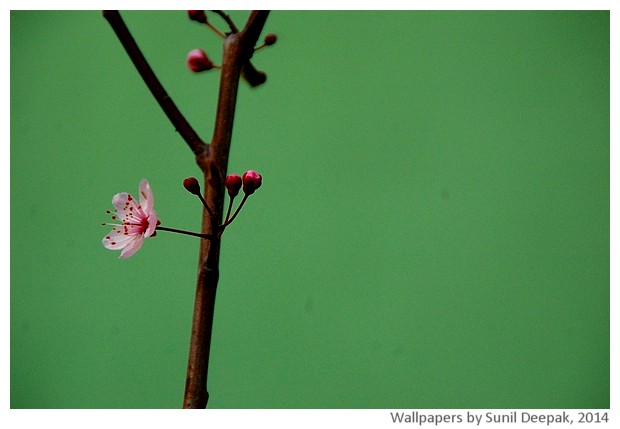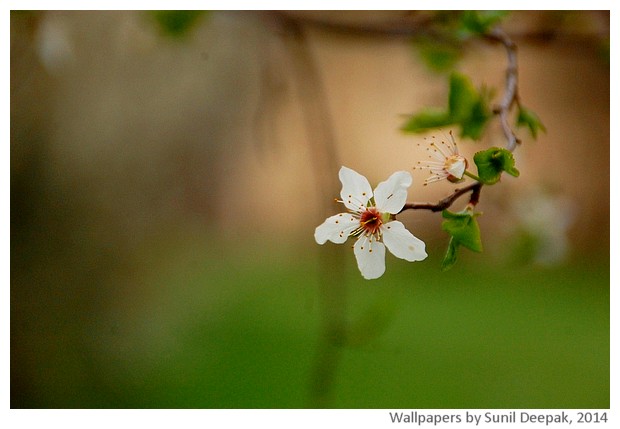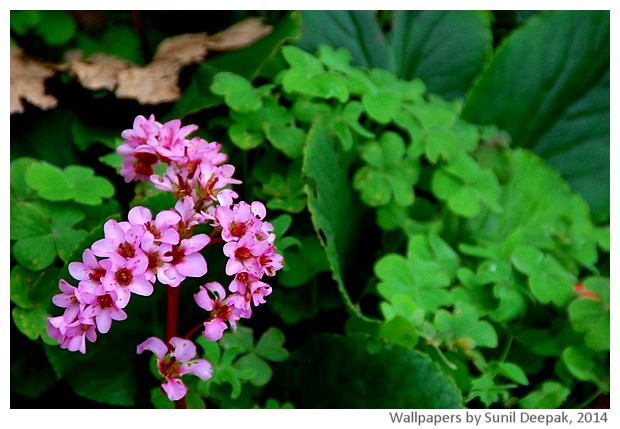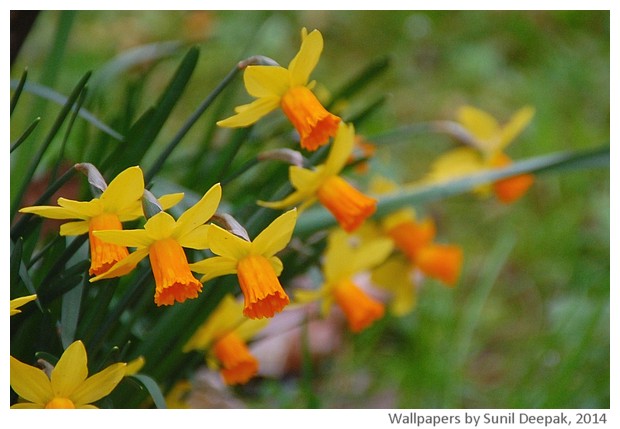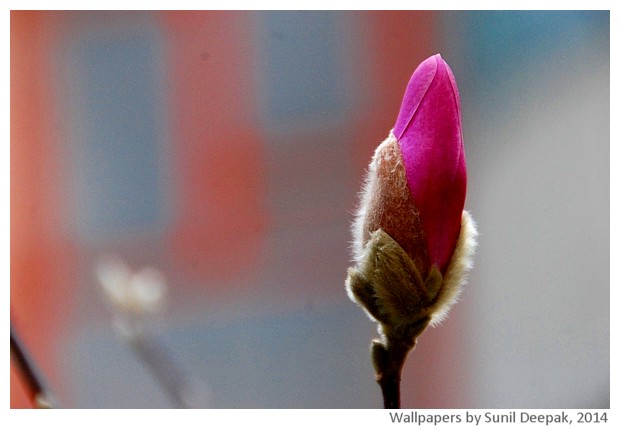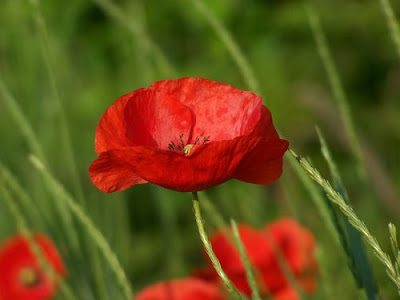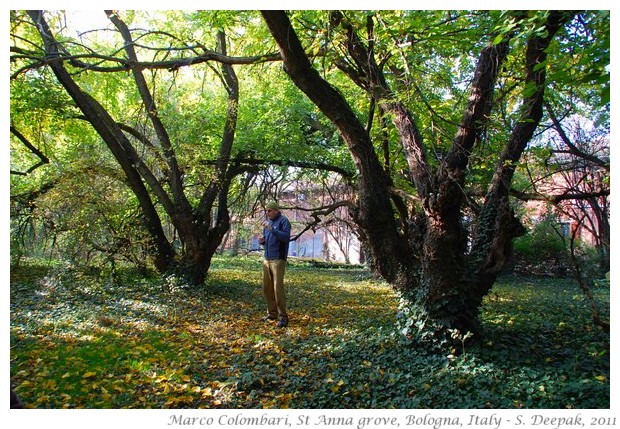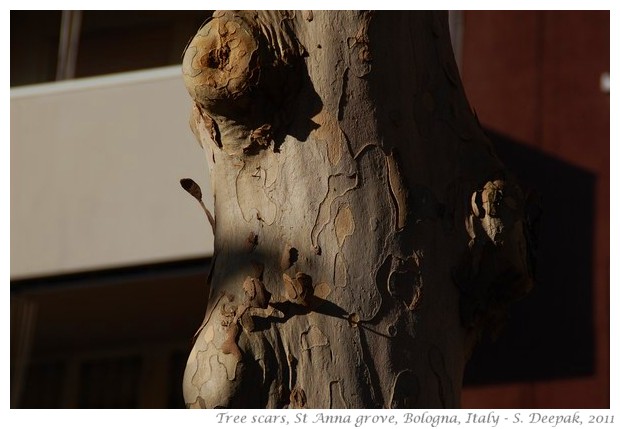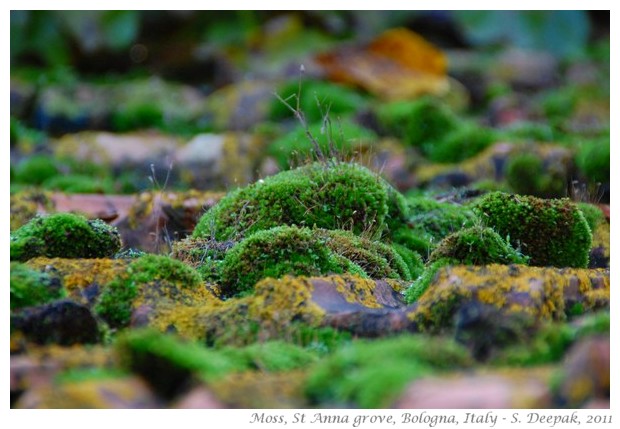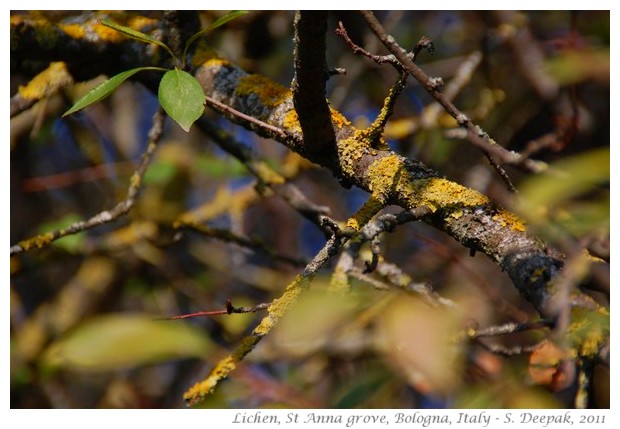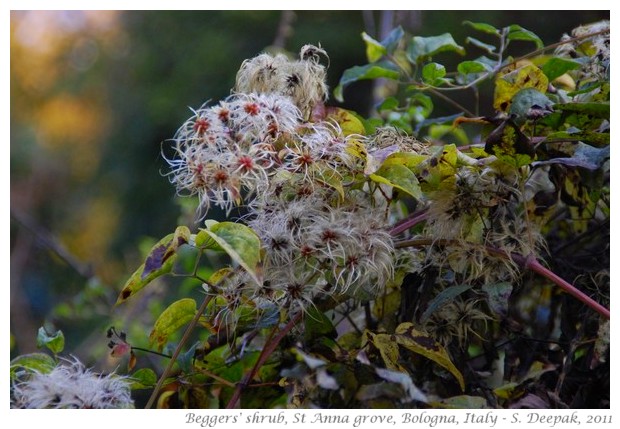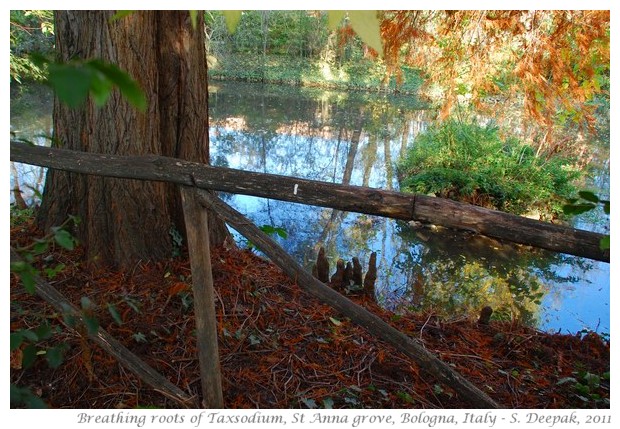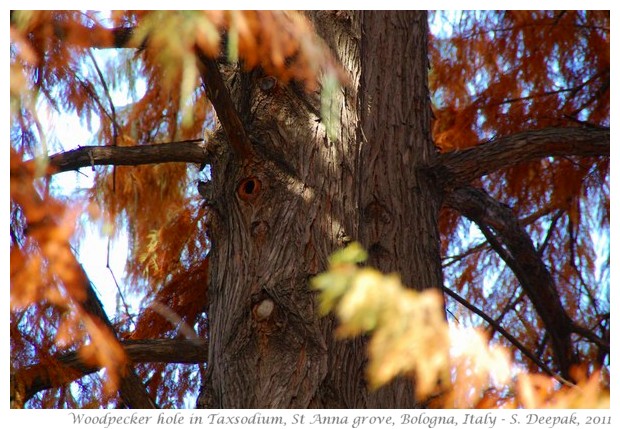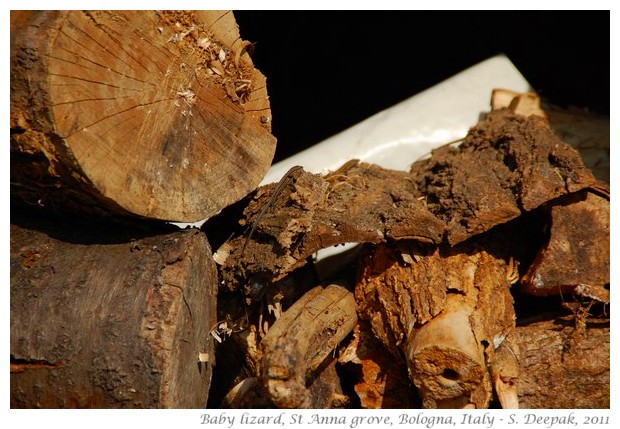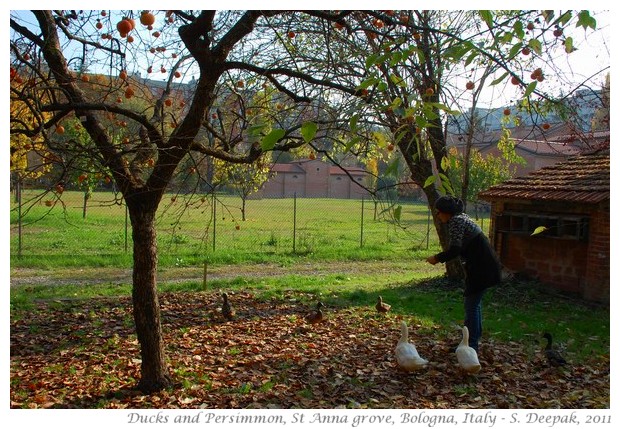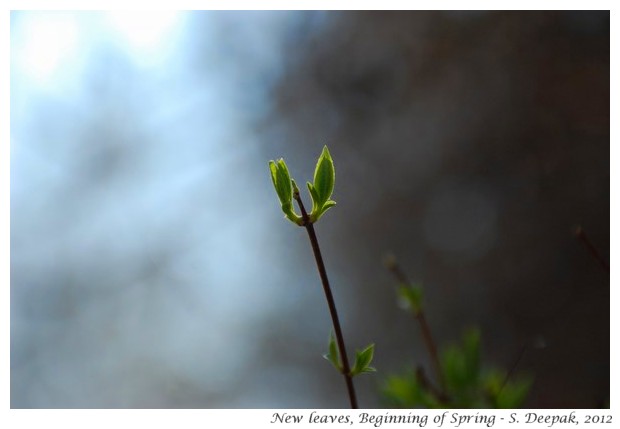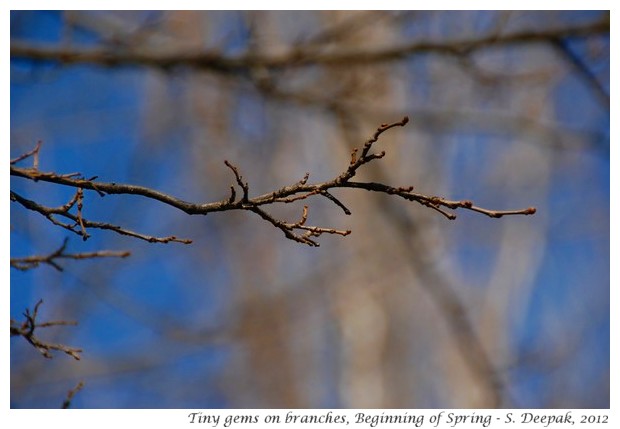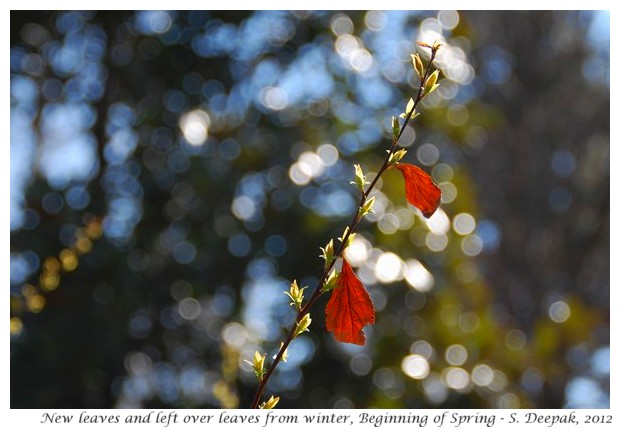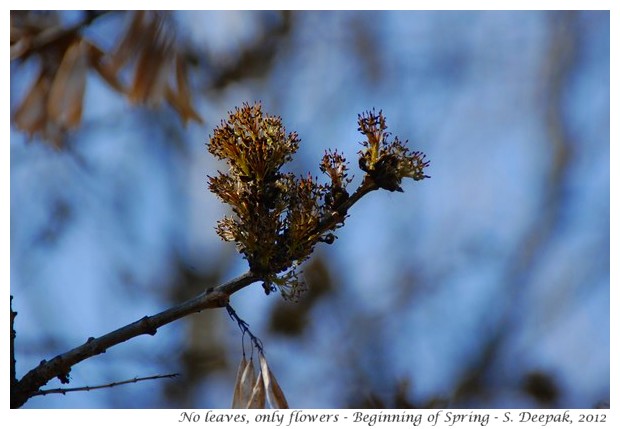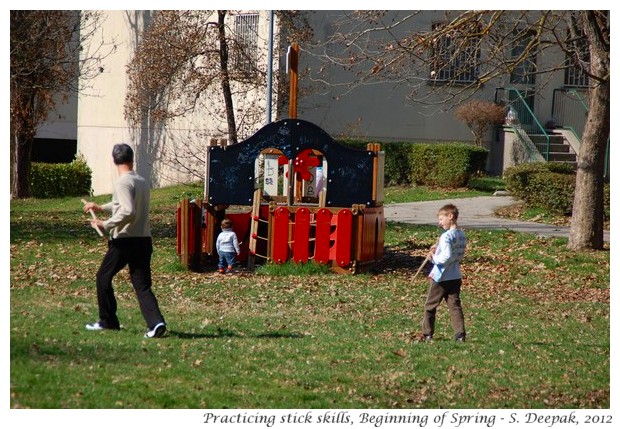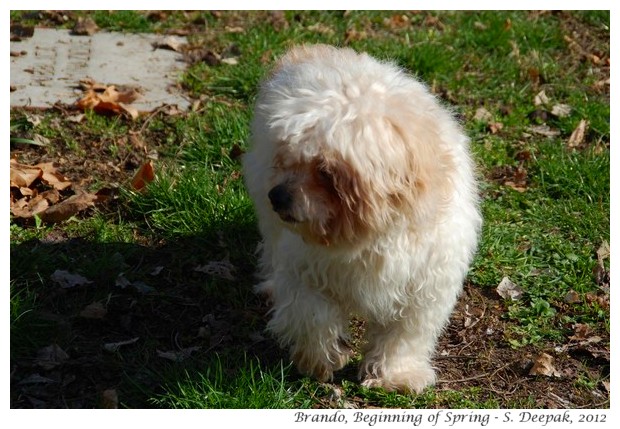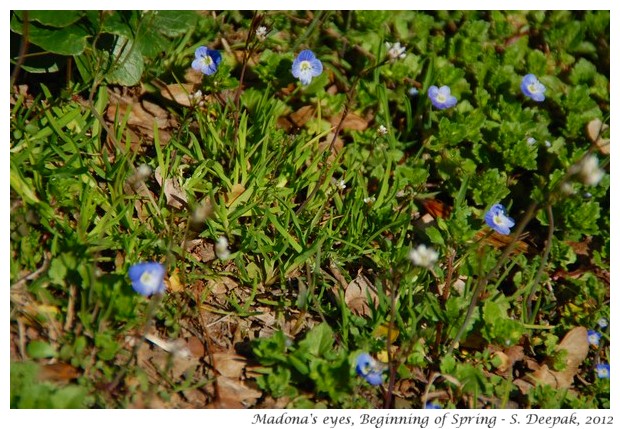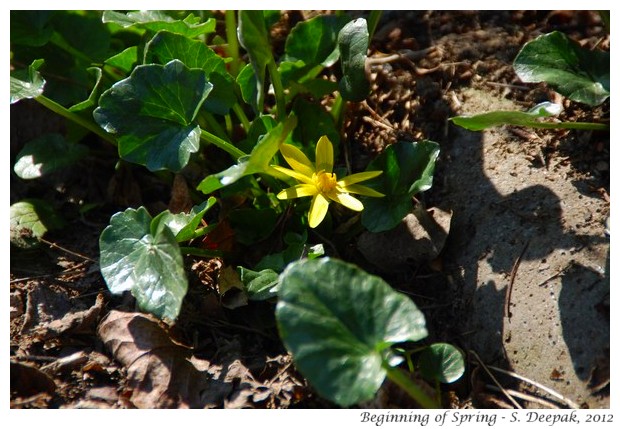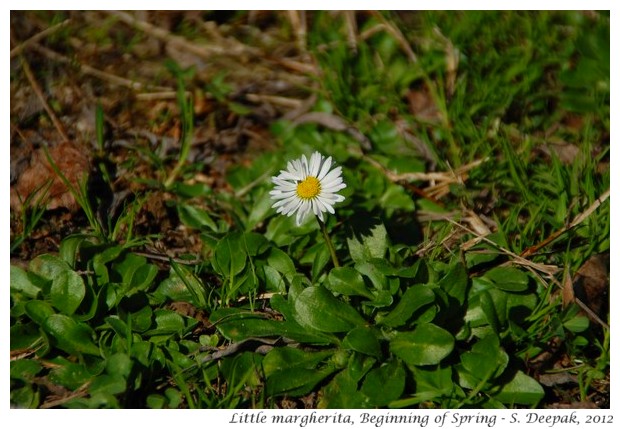A couple of months ago, I was in India, staying with my sister in Gurgaon. One day, while looking out of the window, I was amazed to see a huge beehive hanging from the bottom of a balcony in the neighbour's house. I asked my brother-in-law, he said that it is in the house of his friends, a doctor-couple - Sanjoy and Rakhi Gogoi.
I had never seen such a big beehive and was wondering if they were they not afraid of those bees? (Click on the pic for a bigger view)
A couple of days later, while going out for walk with my brother-in-law, we met Dr Gagoi. I told him about my surprise when I had seen that beehive from the window.
It turned out that Dr Gagoi is passionate about the subject of the bees and beehives. This post is about Dr Gagoi and his passion for the honey bees.
Dr Sanjoy Gagoi's Honeybees' Story
A few years ago, he saw a beehive growing in the terrace outside their kitchen. At that time, he did not know anything about the bees. He was alarmed by it and asked for someone to come and remove it.
A couple of guys turned up in his house. They used smoke to kill the honeybees and then removed the beehive and took it away for the honey. They also gave some honey to him.
Later, when he saw hundreds of dead honeybees on his terrace, Sanjoy felt terrible, he felt that perhaps removing the beehive was not a good action. So he started to read about honeybees, their species, how they are organised, how they live. From what he had learned, he decided that he is not going to remove any beehive ever again.
Soon the honey bees were back on his terrace. This time, he started observing them and he learned many things about them. After sharing his house with them over the years, he feels that the honeybees recognise him. He has never been stung by one.
He is full of stories about the honey bees. For example, that periodically they will leave the beehive and go somewhere else, taking all the honey with them and then, after a few months, one day come back to their old home. bringing their honey.
Another story he shared was about the attacks of a group of bats on the beehives. One evening he found the bees buzzing around furiously, trying to fight the bats. He also joined them, fighting the bats with the long handle of a broom and in the end they successfully managed to send away the bats.
An average beehive can hold around 50,000 bees. They must collect nectar from about 2 million flowers to make 1 pound (450 grams) of honey. A worker bee can live from 30 to 60 days. There is usually a single queen in a hive. Worker honey bees are all female. They forage for food, build the honeycombs, and protect the hive.
Some persons from neighbouring apartments sometimes complain about the bees. However, Dr Gogoi explained that honey bees are critical to the ecosystem, and they’re protected by the Indian Wildlife Protection Act of 1972. It is a crime to destroy a beehive and the correct procedure would be to inform the forest officer and ask them to come and shift the beehive to a safe location.
I wish that I had recorded all the stories he had shared about the honey bees. I remember listening to him spellbound.
Conclusions
It seems that the bees are dying all over the world and a world without bees would face huge problems with crops because the bees are one of our foremost pollinators.
After listening to Dr Gogoi, I had thought that I will read some natural sciences book on this theme. I am hoping to do that soon. In the meantime, if you have any stories about honeybees, please do share them in the comments below.
In 2023, I had read different fiction books about people loving or living with honeybees. One of those books, The Last Bee-Keeper by Julie Carrick Dalton, was about a dystopian world where almost all the honeybees are dead. I still remember that book. You can check my post from 2023 in which I had written about the fiction books related to honey bees.
***


